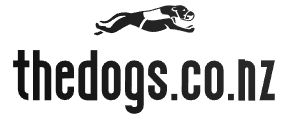Making informed decisions is crucial when comparing starting prices to ensure we get the best value for our money. In today’s fast-paced world, where new products and services are constantly emerging, it’s more important than ever to know how to efficiently compare prices. This skill can save us both time and resources, whether we’re shopping for groceries, gadgets, or even cars.
In this article, we will explore eight straightforward methods that empower us to make smarter purchasing decisions. These techniques are designed to help us navigate the often confusing world of pricing, ensuring that we always get the best deal possible.
Methods to Compare Starting Prices:
-
Leverage Online Tools: Use price comparison websites and apps to quickly compare prices across different retailers.
-
Understand Price Tags: Learn how to interpret unit prices and other information on price tags to evaluate the true cost of a product.
-
Check for Discounts: Look for coupons or promotional offers that can reduce the overall cost of an item.
-
Consider Quality vs. Price: Evaluate the quality of the product in relation to its price to determine if it’s worth the investment.
-
Read Reviews: Consult customer reviews to understand the experiences of other buyers and gauge the product’s value.
-
Track Price History: Use tools or apps that track the price history of products to identify the best time to buy.
-
Assess Total Cost of Ownership: Consider any additional costs associated with a product, like maintenance or accessories, to understand its true price.
-
Negotiate: Don’t be afraid to negotiate prices, especially for larger purchases like cars or appliances.
By employing these methods, we can become more savvy consumers and ensure that we always make informed decisions when it comes to spending our hard-earned money. Together, let’s embark on a journey to become more adept at securing the best deals possible.
Online Tools for Price Comparison
Many online tools are available to help us efficiently compare prices across different platforms and retailers. By using these tools, we can feel more connected and informed, ensuring we get the best deals together. Whether it’s a specialized price comparison website or a browser extension, these resources are designed to scan the web for us, highlighting the best price points and any available discounts.
Benefits of Using Price Comparison Tools:
- Saves time by quickly identifying the best prices.
- Empowers strategic purchasing decisions.
- Reinforces a sense of community by sharing great deals.
When we find a great deal, it feels like a shared victory, reinforcing our sense of community.
These tools also provide us with negotiation leverage. Armed with comprehensive price data, we can confidently approach retailers and ask for price matches or additional discounts.
Key Advantages:
- Turn a solitary task into a shared experience.
- Benefit from collective knowledge.
- Gain negotiation power with retailers.
This collective knowledge and strategic approach to shopping empower us all, allowing everyone to benefit from the best prices and deals available.
Decoding Price Tags
Understanding the details on price tags can help us make informed purchasing decisions. When we walk into a store, price tags often hold the key to unlocking great deals. By deciphering them, we can engage in effective price comparison, ensuring we’re getting the best value. It’s not just about the numbers; it’s about knowing what those numbers mean in the grand scheme of things.
Price tags sometimes indicate potential discounts. We should keep an eye out for words like "markdown" or "sale," which can save us money.
- When we grasp these details, we become part of a savvy community of shoppers who know how to maximize every dollar.
Moreover, understanding price tags empowers us in negotiations.
- If we spot discrepancies or know the pricing trends, we’re better equipped to discuss and potentially lower the price.
- Together, by mastering these tags, we can foster a sense of belonging in a world where smart shopping reigns supreme.
Hunt for Discounts
Uncovering Significant Savings
We can uncover significant savings by strategically hunting for discounts across various platforms and sales events. When we come together as a community of savvy shoppers, we can share tips and tricks on how to spot the best deals.
Price Comparison and Seasonal Sales
By comparing prices on different websites and keeping an eye on seasonal sales, we ensure we’re getting the best value for our money. Embracing digital tools like price comparison apps helps us stay informed on fluctuating prices and available discounts.
Power of Negotiation
Let’s not forget the power of negotiation. Sometimes, all it takes is a friendly conversation with a sales representative to unlock additional savings. Whether we’re shopping online or in-store, asking for available discounts or upcoming promotions can lead to substantial savings.
Community and Informed Purchasing
By actively seeking out and sharing deals, we foster a sense of belonging and mutual benefit within our community. Together, we can make informed purchasing decisions that respect our budgets while maintaining the quality we desire.
Quality vs. Price Assessment
Weighing Quality Against Price
We must weigh the quality of a product against its price to ensure we’re making wise investments. In our shared journey of smart shopping, understanding the balance between quality and price is crucial.
Price Comparison
When we engage in price comparison, remember that the cheapest option isn’t always the best.
- A low price might seem like a win, but if the quality doesn’t hold up, we’ll end up spending more in the long run.
Seeking Discounts Without Compromising Quality
Together, we can:
- Seek out discounts that don’t compromise quality.
- Feel confident in our choices and in our community of savvy shoppers.
Role of Negotiation
Negotiation plays a key role in smart shopping:
- When we negotiate, we’re not just saving money.
- We’re ensuring we’re getting value that meets our standards.
Aligning Purchase Decisions with Quality Expectations
By aligning our purchase decisions with quality expectations, we:
- Strengthen our collective commitment to smart spending.
- Make choices that reflect both our values and our budget.
Consumer Reviews Analysis
Consumer reviews provide valuable insights into a product’s real-world performance and reliability. As a community of savvy shoppers, we can harness the collective wisdom found in these reviews to make informed decisions. By examining what fellow consumers say, we can uncover hidden gems and potential pitfalls before committing our hard-earned money.
Reviews often highlight aspects beyond simple price comparisons, such as:
- Long-term durability
- Unexpected costs
Analyzing reviews can also reveal additional benefits:
- Opportunities for discounts
- Negotiation tips successfully used by others
Sharing this knowledge fosters a sense of connection and empowerment, as we become part of a group making smarter purchasing choices. We can identify patterns in pricing and quality, allowing us to better gauge whether a deal is truly worth it.
Accessing shared experiences strengthens our ability to navigate the complex marketplace, ensuring we all get the best value for our investments.
Tracking Price History
Understanding price trends over time empowers us to make more strategic purchasing decisions. By tracking price history, we’re able to identify patterns that help us know when prices might drop or rise. This not only aids in effective price comparison but also lets us spot genuine discounts.
When we see an item’s price has decreased consistently over time, we can confidently jump on a deal, knowing it’s not just a fleeting offer.
Being part of a community that shares pricing data enhances our bargaining power. We can share insights and experiences, learning together when the best time is to buy.
Equipped with historical price data, we can negotiate more effectively, whether we’re in a store or online. Sellers often appreciate informed buyers who know the market.
By being part of this informed group, we make decisions that not only benefit us individually but also support each other as a collective.
Let’s make smarter purchases together.
Total Cost Evaluation
When evaluating the total cost of a product, we must consider factors beyond just the sticker price, such as shipping fees and taxes. As a community that values smart spending, we know that these additional costs can significantly impact our final expenses.
By conducting a thorough price comparison, we can uncover the true price of items and make informed purchasing decisions.
Let’s not overlook the potential savings from discounts. Whether they’re seasonal offers or exclusive deals, discounts can lower the total cost. We should always be on the lookout for promotions that can benefit us as a group, sharing them within our network to maximize savings collectively.
While negotiation is a skill we’ll explore later, it’s essential to remember its importance in total cost evaluation. By understanding the full financial picture, we empower ourselves to negotiate better terms in the future.
Together, we can create a community of savvy consumers who make the most of every dollar spent.
Mastering the Art of Negotiation
Elevating Purchasing Power Through Negotiation
We can elevate our purchasing power by honing our negotiation skills to secure better deals and terms. By engaging in effective negotiation, we not only strengthen our position but also foster a sense of community with sellers, creating win-win situations. Let’s embrace the art of negotiation as a shared journey where we all benefit from fair exchanges and mutual respect.
Steps to Effective Negotiation:
-
Conduct Thorough Price Comparisons:
- Understand the market landscape.
- Know the standard rates to confidently request discounts.
-
Approach Sellers with Reasonable Offers:
- Be armed with knowledge and show that you’ve done your homework.
- Communicate openly by highlighting your interest in their product and expressing a desire for a mutually beneficial agreement.
-
Be Ready to Walk Away:
- If the terms don’t meet your expectations, be prepared to leave the negotiation.
- This stance demonstrates resolve and may encourage sellers to reconsider their offers.
By following these steps, we can make negotiation a rewarding experience that strengthens our purchasing community.
What are some psychological factors that influence consumer perceptions of starting prices?
When we consider the psychological factors that impact how we view starting prices, it’s crucial to recognize the power of perception. Our brains can be influenced by various cues, such as:
- Anchoring effects
- Perceived value of a product
Emotions also play a significant role. Feelings of:
- Scarcity
- Urgency
can sway our judgments.
Understanding these factors helps us make more informed decisions when comparing prices.
How do cultural differences affect price comparison strategies across different countries?
Cultural differences significantly influence how we approach comparing prices in various countries. Our traditions, values, and norms all contribute to shaping our strategies for price comparison.
These differences affect:
- What factors we prioritize when making purchasing decisions
- How we perceive the value of a product or service
By understanding these cultural nuances, we can better navigate the complexities of price comparison strategies across diverse countries.
What is the impact of price anchoring on consumer purchasing decisions?
Price anchoring significantly influences our purchasing decisions.
When we encounter an initial price, it tends to act as a reference point for our subsequent evaluations. This psychological phenomenon can lead us to perceive following prices as more reasonable or expensive relative to the anchor.
Therefore, understanding how price anchoring impacts our perceptions is crucial in making informed purchasing choices across various products and services.
Conclusion
In conclusion, mastering the art of comparing starting prices is a valuable skill that can save you money and ensure you get the best deal possible.
By utilizing the following methods, you can make informed purchasing decisions:
- Online Tools: Use comparison websites and apps to instantly compare prices from different retailers.
- Decoding Price Tags: Learn how to interpret marketing tactics to identify genuine discounts.
- Hunting for Discounts: Look for coupons, seasonal sales, and promotional codes.
- Analyzing Consumer Reviews: Read reviews to understand the product’s value and reliability from other buyers’ perspectives.
Further enhance your price comparison abilities by:
- Tracking price history to spot trends and identify the best time to buy.
- Evaluating total costs, including shipping and taxes, to understand the true price.
- Practicing negotiation techniques to potentially lower the price.
Start implementing these simple methods today to become a savvy shopper!




